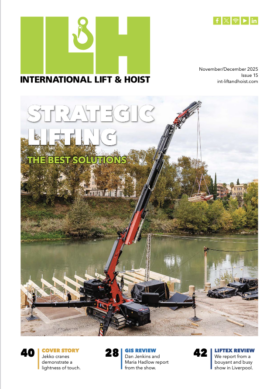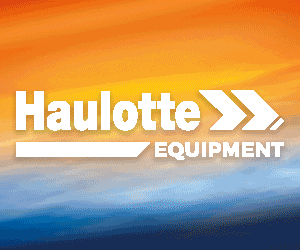)
Braking News
More end users of overhead cranes, particularly in the steel sector, are installing emergency brakes – but it’s been a long time coming, says Joel Cox, managing director of sales for Dellner Bubenzer USA.
We recently received an order to fit emergency brakes on two 400USt capacity hot metal ladle cranes at Nucor Corporation’s Hertford facility in North Carolina. The high capacity of the SF-series (these brakes will be SF50s) makes them particularly suitable as secondary emergency installs on equipment such as hoist gears and downhill conveyors.
However, what’s interesting about the increasing regularity of such contracts is that they are charting the progress of an industry. Further, they emphasise what can be gained if specialist suppliers commit to long-term education versus the immediacy of a quick buck.
As this magazine has covered over the years, we have spearheaded an awareness campaign centred on the importance of installing emergency brakes, especially in environments where critical lifts are commonplace. Electric overhead travelling (EOT) cranes are ubiquitous in steel mills and other industrial facilities, where they can be up to 450t or more in capacity and lift ladles of molten metal that are poured into casting machines. Imagine therefore the catastrophic scene when, say, a gear shaft should fracture, and a load is dropped. The damage to property and inevitable injury, or worse, to personnel is incalculable.
All too often a major incident leads to an investigation that exposes the lack of an emergency brake – but then it’s too late. A new ladle crane might represent a $7 million investment for a steel mill and we’re talking about a potentially lifesaving addition at a tiny fraction of that cost. It’s not about money; end users are prepared to invest in safety systems, but they needed to better understand the risks and products available, which is now starting to happen.
In simple terms, a motor drives a gearbox that rotates a rope drum during lifting or lowering operations. On most of the installed population of US overhead cranes, a brake is only connected to the motor, meaning it is beyond the point of failure in many instances. Emergency brakes that could be connected to the winding drum itself can provide an additional safeguard and keep the load securely on the crane hook.
Emergency brake pioneers
Nucor was among the first to step up, with Steel Dynamics (SDI), ArcelorMittal, and Novelis also configuring specifications for adding or implementing emergency brakes. But our work is not yet done. I estimate that less than 15% of cranes in the steel sector, including new ones, are fitted with emergency brakes. In the ports sector, by contrast, ship-to-shore cranes, used for loading and unloading containers from ships, are routinely fitted with brakes on both the hoist and boom motions – as standard in most cases. Aerospace, pulp and paper, and power generation, are other target industries for this equipment.
Regardless of the environment, why would anyone be comfortable about making a critical lift, where a crane is moving an expensive and/or dangerous load, without an additional emergency, failsafe brake? We need to continue our outreach campaigns and endeavours to educate steel and other professionals, so they specify emergency brakes at the earliest stage of dialogue with a crane manufacturer.
Frankly, an original equipment manufacturer (OEM) has been unlikely to propose a cost-adding feature when it could inflate their bid in a competitive tender situation. But this is changing. The initial introduction with OEMs’ engineering departments is normally a small meeting that covers design characteristics and pitfalls to avoid. Three-dimensional modelling that enables them to add our solutions to their drawing designs has helped to visualise how these systems work for all relevant parties.
About half of our emergency brake work is on new installs and retrofit respectively. The cost of retrofit has some small fees associated with the engineering survey and items needed to implement the brakes. On the other hand, when they are integrated from the beginning of the crane build, we can easily make a service platform or room on the hoist/trolley decking to gain access in future versus calculating if they need to add festoon or other extra electrical wires on the trolley.
Much of our education programmes focus on what is involved in an emergency brake retrofit, as we are dealing with such a large volume of heavy-duty EOT cranes in industry. The first step is to conduct a proper analysis of the existing crane structure, since we will need to strengthen and adapt a location for the brake on the trolley deck to hold the emergency brake retrofit and handle the forces of the braking at the new location.
We also need to know where to locate the added disc or split disc so that the new brake has adequate surface area to grab onto the disc. It takes one day to mount machinery and make sure the disc is running true and another day for wiring and testing. Typical installation can be done during a scheduled down time for other inspection processes at a mill.
Industry is running out of excuses not to install these important safety systems.











